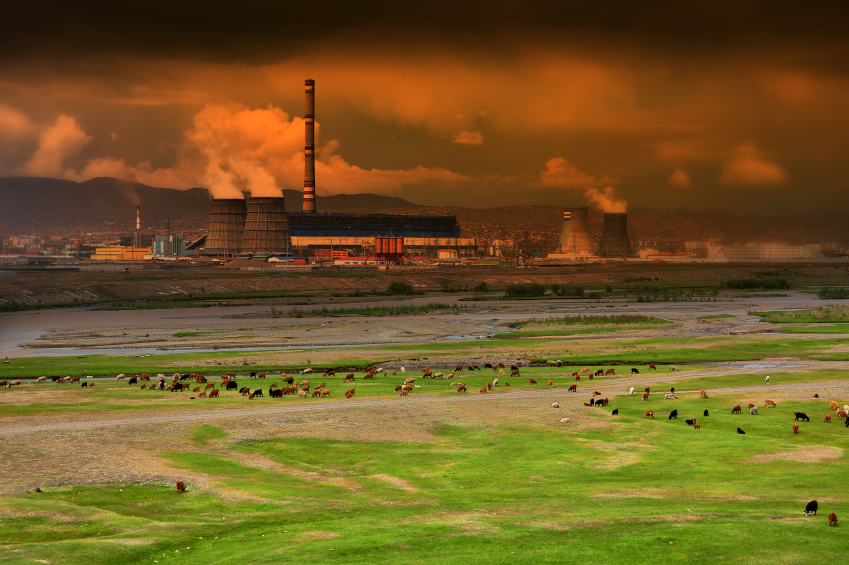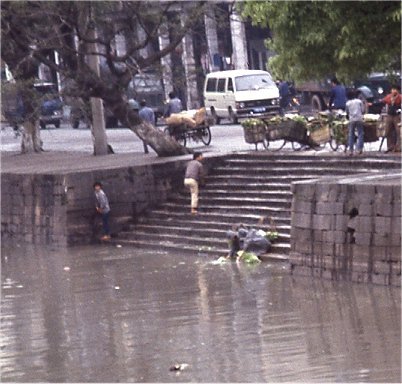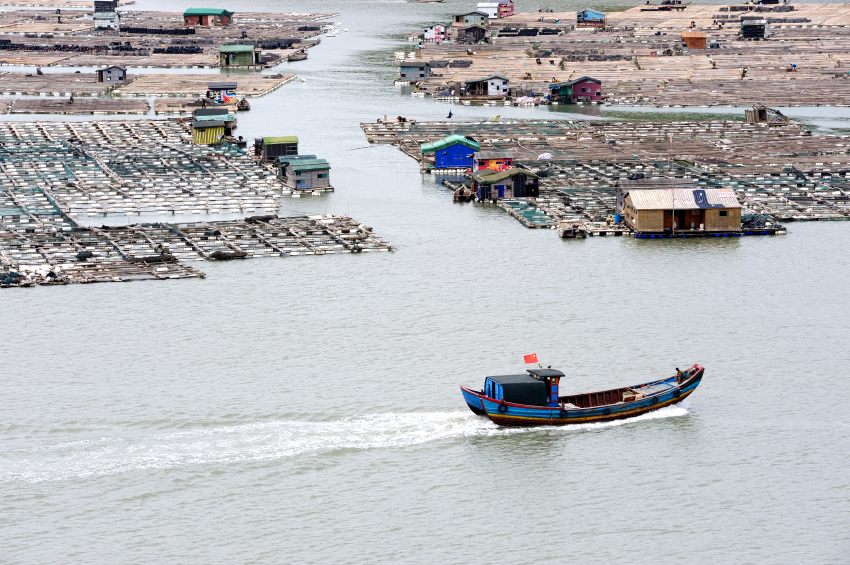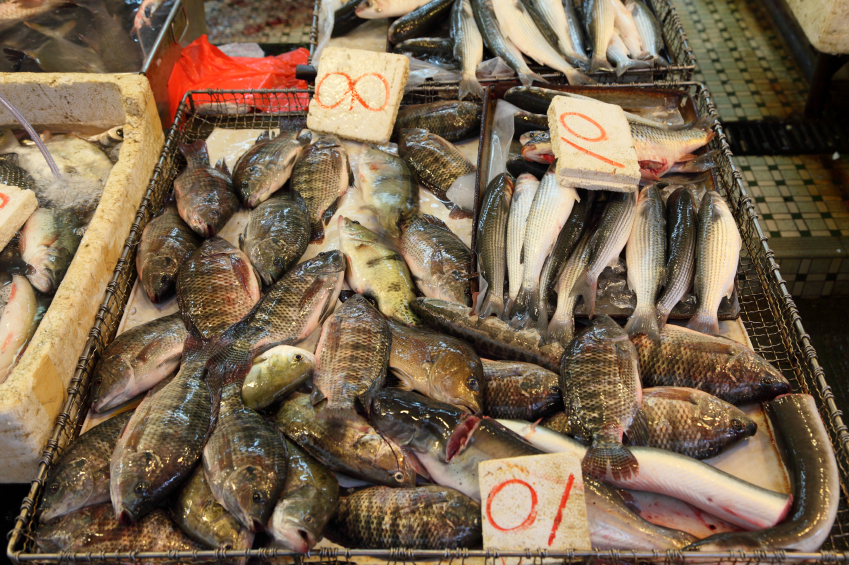 Homepage
Sitemap
Site Search
Homepage
Sitemap
Site Search

Food from China
Before you read about foods grown, raised and made in China, read about food safety as it will set the tone for this article...and then see what other countries are doing to protect their food supplies!
more info:
Before you read about foods grown, raised and made in China, read about food safety as it will set the tone for this article...and then see what other countries are doing to protect their food supplies!
Food safety has been in my life for a long time. To me it's not just how
the food is cared for, how it's handled, cooked or what temperature it's
held at, it's more than that. In cooking classes I've taught, I've given the example of a delivery
person walking through all sorts of muck and detritus getting into and
off his truck's back storage area while delivering lettuce to a restaurant.
In walking to and from other restaurants and stepping in who knows what
on the streets and sidewalks, all is picked up on the soles of his shoes
and now it gets tracked on to the floor where the lettuce also sits in
the back of the truck. By
the way, the truck's storage bed probably hasn't been washed in
years! Gosh
would you eat off the floor of that truck? From the fields where the lettuce
grows, it is directly packaged in
boxes, the boxes have holes and slots so it can breath and to allow for cold air to
circulate, keeping it crisp and to prevent rapid spoilage on its journey
to the customer's plate. Along the way these
boxes sit on the floors of trucks and lo and behold, some pieces of
lettuce exposed by the holes protrude through them, absorbing contaminates that are on the the
floor bed...yuck!
When it
arrives at a restaurant, it might be set on a work table, and then it is cut for
salad, perhaps it didn't even get washed before cutting. There is still
ignorance by some cooks due to the lack of, or poor training; to the
danger that proper food handling and sanitation would eliminate! The box may
sit out of refrigeration after this, because the cook is too busy to put
it away in the refrigerator. So now it sits out in a warm environment to be used again for
dinner salads. The cook has a lot of work to do including cutting some
chicken. The cook cuts chicken on the same table where the box
of lettuce once was; the table was wiped down with a wet cloth
but not washed with soap and sanitizer. This is a classic cross
contamination example, you see the chicken gets placed on the work table
surface that has bacteriaon it from the dirty box bottom!
Because the tabletop wasn't sanitized, this bacteria is still alive
and can be transmitted from the table's surface to the chicken by
direct contact. If we go back a few steps, the lettuce was cut
directly from the box where some of its outer leaves were exposed to
who knows what kind of contaminates? When cutting the lettuce, the
contaminated leaves were not removed nor was the lettuce washed, so
the blade of knife, when slicing through the outer leaves, now spreads
bacteria through the lettuce as it was cut. The cut lettuce went
directly to a storage container awaiting a customer's order. If you
ordered and ate the salad under this scenario, there is a very good likelihood that you're
going to get sick for a few days.
The chicken on the other hand might not get you sick if it is cooked to the FDA's recommended cooking temperature within a few hours. You see it doesn't have have enough time for the bacteria to grow and multiply into a toxic state. But if the chicken isn't used that day and instead it's placed in a refrigerator and sits there for a few days, then it would have time for the contaminants to grow. The how and why of this is that the chicken was contaminated with some of the bacteria, when it was cut on the non-sanitized table. Because it wasn't consumed and was stored away, time and temperature come into play, time allows the bacteria to grow, especially if the temperature is above 40 degrees F. as this allows it to grow faster. Why 40 degrees?---Refrigeration slows bacterial growth. Bacteria exist everywhere in nature. They are in the soil, air, water, and the foods we eat. When they have nutrients (food), moisture, and favorable temperatures, they grow rapidly, increasing in numbers to the point where some types of bacteria can cause illness. Bacteria grow most rapidly in the range of temperatures between 40 and 140 degrees F, the "Danger Zone", some doubling in number in as little as 20 minutes. A refrigerator set at 40 degrees F or below will protect most foods.
Regardless of the
temperature, since it was contaminated and has sat for two days, it is a
food item that is potentially hazardous aka. PHF. Cooking it may kill the
bacteria but the chicken meat will have spoiled and will taste and smell
strong---yuck! This may have happened to you at home, you left
chicken in your refrigerator for a few days and when you remembered
it was there, you opened it only to find it smelling like rotten eggs
and feeling slimy. Seeing this, you probably became upset at yourself
for wasting the chicken and money, as you threw it in the garbage.
In the restaurant
world a saying exists to this point---"If in doubt, throw it out!"
Unfortunately you don't want to do this often; with buying only what
you will use, avoiding contamination, proper time and temperature
controls and using it in a timely matter , you can avoid the loss of
both the chicken and the money you paid to buy it.
All
the aforementioned does happen from time to time in food
establishments and we hear
about "food borne illnesses" all the time. Fortunately many restaurants
know not to put the box on the table in the first place, always washing the lettuce and
then repackaging what's left before storing it away. Most often
it's labeled and dated and rotated to always insure good quality. It's all about being
aware of contamination, cleaning, storage and safe food handing
procedures.
In many states a ServSafe certification is required for chefs and cooks who are supervisors of other chefs and cooks. It may also be required by local cities and towns for cooks and servers, to satisfy local food licenses and permits being issued. Some states may only require that all food handlers be aware of the dangers that present themselves if food isn't handled properly. I can't believe that there are even some states that don't require an any of the above! I feel that it is the responsibility of all foodservice cooks, chefs, food handlers and servers to serve clean uncontaminated and wholesome food.
National Restaurants Association's
ServSafe Program---ServSafe Food Safety Training Program leads
the way in providing current and comprehensive educational materials to
the restaurant industry. More than 4 million foodservice professionals
have been certified through the ServSafe Food Protection Manager
Certification Exam, which is accredited by the American National
Standards Institute (ANSI)-Conference for Food Protection (CFP).
ServSafe training and certification is recognized by more federal, state
and local jurisdictions than any other food safety certification.
As in the lettuce and chicken examples above, sometimes standards slip and we can face
dangers while eating food. A good example is of the E-coli outbreak that
recently happened at Chipotle Restaurants. Chipolte has
a PR nightmare now, has lost business and is retraining all employees in
food safety awareness. I hope this "after the fact" re-education works
for them and other food establishments should take notice! Simply put,
you can't be too clean when working around and with food!
"Food safety is a scientific discipline describing handling,
preparation, and storage of food in ways that prevent food borne
illness. This includes a number of routines that should be followed
to avoid potentially severe health hazards." (Data from: Wikipedia)
What does this all have to do with food from China???
Well, what about the foods from China itself, are they grown and
processed in a safe matter? Fortunately, in most countries in the world
they are, but in
China there is a large amount of industrial pollution. There may
still be times you might get sick from something you ate, as talked
about above. Food borne illness is different than plants or animals
absorbing pollutants into their systems. The following story is
another example of a food borne illness, so you understand the process---I got "the
bug" once in Quebec from eating Veal Blanquette, a creamy French
Veal stew, that was more than likely
infected by some bacteria and then while sitting in a food warmer at an improper
temperature---not in the under 40 degrees or over 140 degree "Safe Zone"
for food, the bacteria grew to a toxic state. It may have been contaminated with a un-sanitized
spoon or with the introduction of a bacterial from unwashed hands.
There are too many possibilities to suppose why. However this wasn't the fault of the meat or ingredients in the
dish, rather improper handing was the cause! Proper food handling
is paramount, we know this! But what about how the food stuff is grown and
handled before it arrives at a restaurant, supermarket or food store? I'm talking about what might be absorbed into the the
items themselves during the growing process and then again in packaging. I
mentioned ServSafe above, and in countries around the world, there are agencies
regulating food safety. In the USA, in England, Canada, Australia, in
France and on and on, each country protects the consumer from food
dangers through regulation and inspection but is this enough and is the
actual "farming/growing" overseen? And now with the upswing in the
demand for organically grown and raised products that becomes
questionable too. I see more and more interest in these organic foods,
so hopefully more attention will be paid to what's in the soil and
the certification process of becoming a certified organic grower or
producer especially the way it is done in the USA.

This brings me to wonder about foods grown, raised and made in China? This is
something that has concerned me for a long time. Many years ago I
traveled through China with an official delegation, going to and seeing
things a regular tourist didn't. I saw wheat growing in a field where
rye dye #2 waste water was draining into it from the nearby factory. Then there was the lead paint plant next to
the rice fields and the chromium smelter's rinse water flowing into the
same pond where Tilapia were being raised for consumption. Perhaps the
scariest was seeing a restaurant worker washing Bok Choy in the river
whose water was a murky greenish color and smelled like sewage, a
boy was urinating several feet from the worker washing the cabbage
as another man had just finished and was walking away. The water in
the river was flowing towards the lettuce! The worker then
brought it to the kitchen of the restaurant to be cooked!
I even took a picture of this in total amazement!
Globally,
contaminated water is a serious problem that can cause severe pain,
disability and even death. Common global water-related diseases
caused by parasites include Guinea worm, schistosomiasis, amebiasis,
cryptosporidiosis (Crypto), and giardiasis. People become infected
with these diseases when they swallow or have contact with water
that has been contaminated by certain parasites. For example,
individuals drinking water contaminated with fecal matter containing
the ameba Entamoeba histolytica can get amebic dysentery (amebiasis).
An individual can get Guinea worm disease when they drink water that
contains the parasite Dracunculus medinensis. If an infected person
with an open Guinea worm wound enters a pond or well used for
drinking water, they can spread the parasite into the water and
continue the cycle of contamination and infection. Schistosomiasis
can be spread when people swim in or have contact with freshwater
lakes that are contaminated with Schistosoma parasites.
In 2008 powdered milk was found to contain melamine, a chemical used in producing plastics, and was sickening infants and young children around the country. The chemical soon started turning up in the products of international companies, including giants such as Cadbury, Nestlée, and Unilever. - US News
As we now see "made in China" on just about everything these days, we are also seeing "packed and grown in China" on many food items....this concerns me a lot. I recently, without looking at the label, purchased several food items from China. When at home I found out where they came from and threw them away...I didn't even consider returning them or God forbid, donating them to a food pantry...why pass these things on to potentially harm someone? Are these items inspected before being allowed on USA consumer shelves, are they tested by inspectors? The US Department of Agriculture can't even guarantee that all food in the USA is in compliance with food regulations due to our government's lack of funding of the agency. It is terribly understaffed, and they can't inspect all the food produced here so what about the food coming here from China???

United States Department of Agriculture Food Safety and Inspection Service
Food Safety Information.
Regarding Melamine.---
"FDA has information indicating that melamine and its analogues have been added to milk produced in China and that milk contaminated in such a fashion has been used to manufacture infant formulas and other dairy-based products."...more
USDA's Food Safety and Inspection Service (FSIS) is
responsible for ensuring that domestic and imported meat, poultry,
and egg products are safe, wholesome, and accurately labeled.
USDA's Economic Research Service. "As Americans have become
wealthier and more ethnically diverse, the American food basket
reflects a growing share of tropical products, spices, and imported
gourmet products."
Good Cooking's View: We are talking Big Business here, billions of trade dollars are
exchanged with China each year, perhaps this is why there is no outright ban of Chinese grown and produced foods in to the USA?
Look at what is happening in Australia.
ABC News Australia-Frozen berries hepatitis A scare!---The
Department of Agriculture tests foods based on risk assessments and
advice given by the Food Standards Australia New Zealand (FSANZ).
"Do they test all the food coming into the country? Every type of
food is tested, but not every shipment of food coming in."
Look at what major worldwide shipping companies say like EES
Shipping the services of Australia and FedEx of Canada.
EES Shipping PTY LTD---A major
Worldwide Shipping Company located in Australia.---The Department
of Agriculture have released another statement in relation to the
national response to recent concerns about the safety of imported
foods. This comes after a Hepatitis A outbreak linked to frozen
berries imported from China. Good Cooking's
View: And we are even talking Organic here?
FedEx Canada New Import Requirements---The Canadian Food
Inspection Agency (CFIA) is advising all importers of food products
from China containing milk or milk-derived ingredients that the
Agency will require documentation demonstrating certain safety and
compliance for these products. Importers are reminded of their
responsibility for the safety of products imported into Canada.
Good Cooking's View: Thank God, Canada is doing
something and setting new standards!
Natural News America's Truth News Bureau---'Organic' from
China exposed: The shocking truth about 'organic' foods grown in the
world's worst environmental cesspool!
Good Cooking's View: This is a must read and
wait until you see the pictures!
Look at any number of the articles listed below from honey, a
big issue, to pet food---then there is the garlic thing! But wait, there
is more like Tilapia, processed foods and so much more.
Meat & Poultry Magazine, "Poultry imports from China cause flap."
WASHINGTON In the aftermath of several high-profile incidents of
food contamination in China, food-safety advocates in the United
States are alarmed about a decision made by the Obama administration
that allows chicken processed in China to be sold in the US,
according to a Bloomberg report.
Good Cooking's View: Again Big Business here
and did you know that Tyson ships chicken grown in the USA to China
to be butchered, because it's cheaper than doing it here even with
air freight included?
www.worldtruth.tv---Imported Chinese Tilapia Are Raised on Feces.---"In many cases, fish farmed in Asia and imported to the US have been raised on diets of chicken and pig feces." Michael Doyle, director of the Center for Food Safety at the University of Georgia said. In some places, like Thailand for example, they will just put the chickens over the pond and they just poop right in the pond. Good Cooking's View: We have "NEVER" eaten or cooked Tilapia!
The Huffington Post---Dog Treats From China Rumored To Be Unsafe For
Pets Prompts FDA Investigation---Rachael Chambers of Morgan
Hill, Calif., gave her four dogs Milo's Kitchen Home-style Dog
Treats. Not long after, three of her dogs began getting sick. Her
Dachshund-mix, Liz, had diarrhea and wouldn't eat and Chihuahua-mix
Jack stopped eating and had to undergo weeks of liver treatment. But
13-year-old shepherd-mix Cali died when her stomach ruptured.
Good Cooking's View: Guess where the treats
came from?
New American, Freedom that Shall Not Perish---USDA Approves Import
of Poultry Processed in China.---The U.S. Department of
Agriculture (USDA) quietly lifted its restriction on processed
poultry (such as chicken and turkey) from Communist China being
imported into the United States.
Good Cooking's View: It's all about Big
Business!
Business Insider---One Third Of America's Honey May Be A Dangerous
And Illegal Import From China.---"They'll ship their honey to
another country, say, Malaysia or Thailand or India," said Troy Fore
of the American Beekeeping Federation. "Then it's apparently honey
from that country, so they can ship it (to the U.S.) and it escapes
the duty.
Good Cooking's View: Where will this end or are
we doomed?
This is only a sample of what is going on in the food world in
the USA, Canada and Australia. I hope this will make you concerned about
what you put in your mouth and to be worried about where it comes from.
In fairness to China, they aren't the only country in the world whose
food exports you should be worried about! Most of Asia, some countries
in Europe, Latin America and South America have some issues too!
Now that you have read this and gone to look at some of the other web links, what do you think? Are you going to rush out and buy fresh bamboo shoots grown in the Yangtze River or the Tilapia filets from the ponds near the industrial park. What about the apple juice concentrate from around Beijing or the Leechee Nuts from the orchards next to the smoldering garbage dump? Cripes, is Tsingtao Beer safe to drink?!